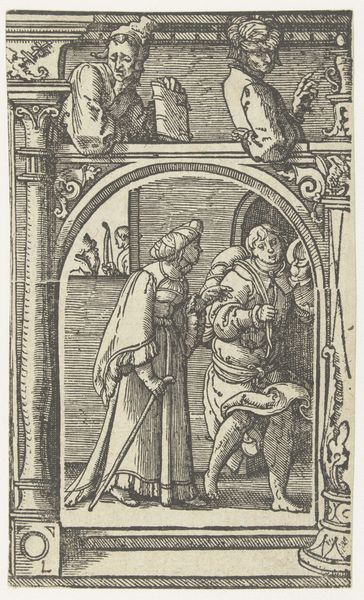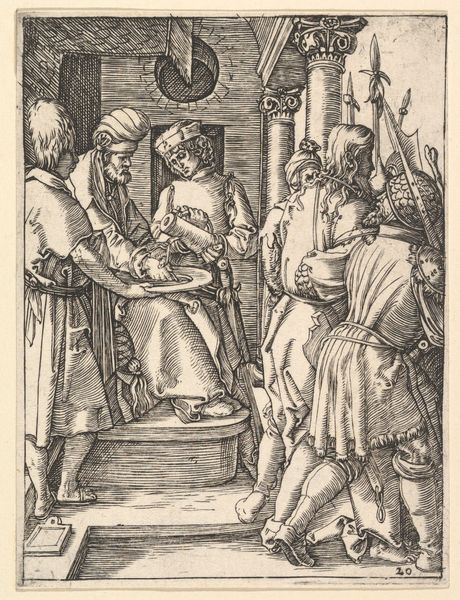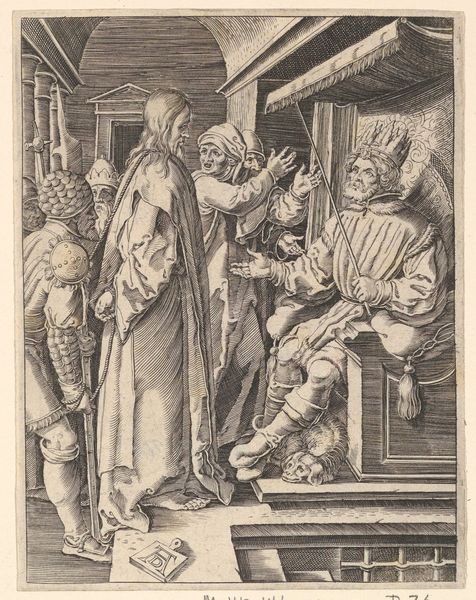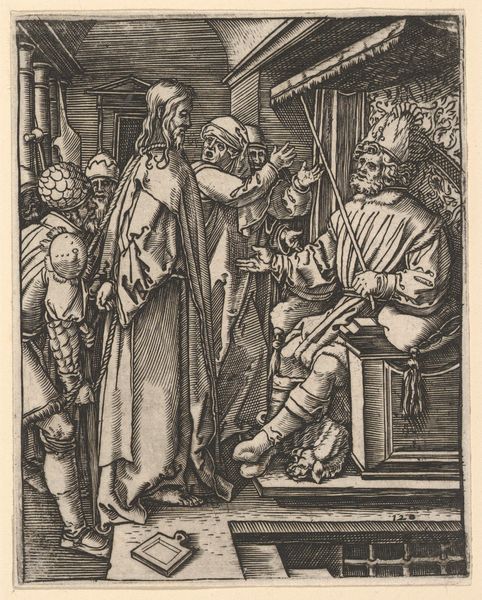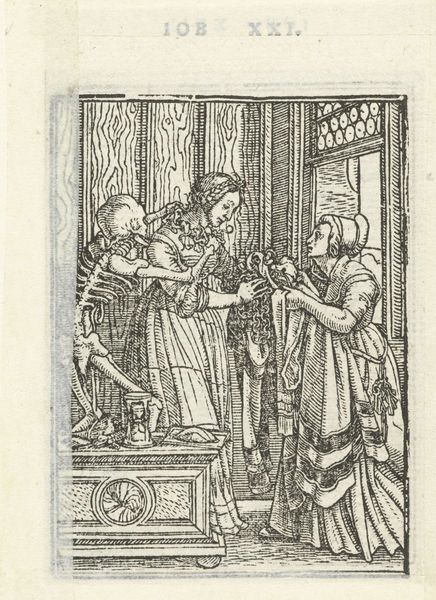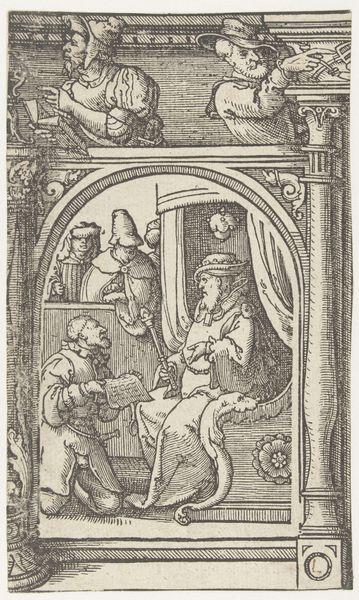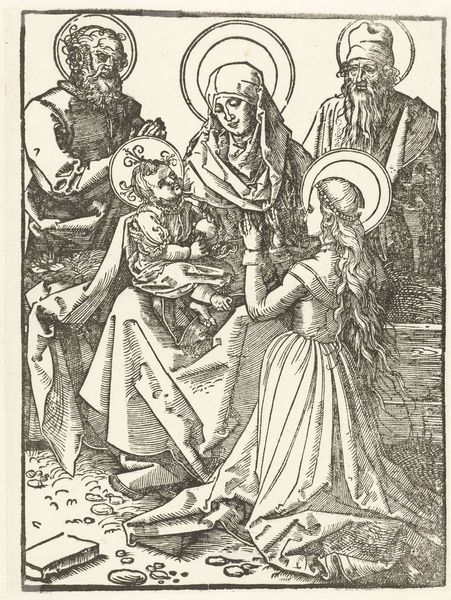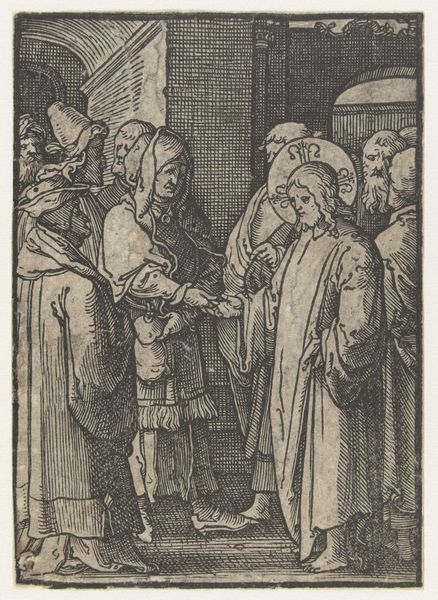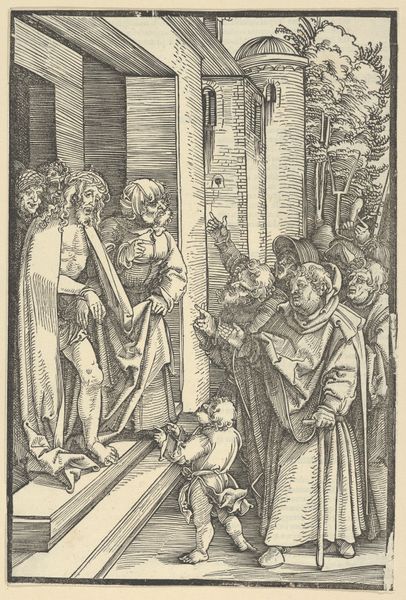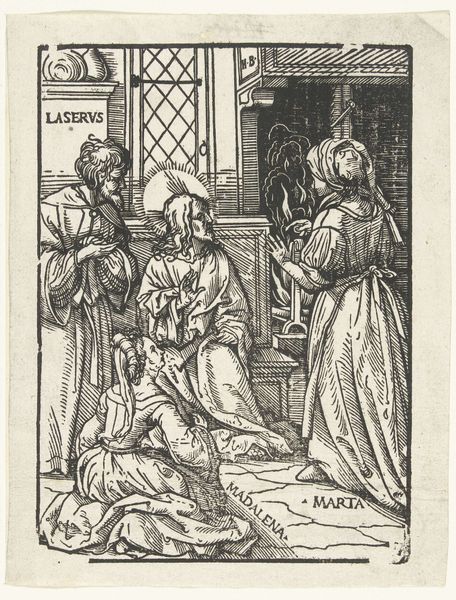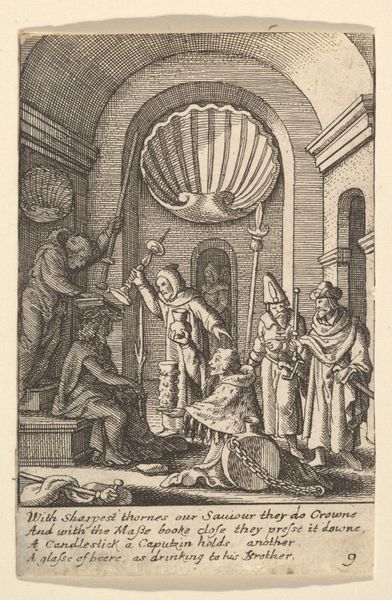
The Countess from Dance of Death (Lyons) 1523 - 1526
0:00
0:00
print, woodcut
#
narrative-art
#
pen drawing
# print
#
figuration
#
woodcut
#
line
#
history-painting
#
northern-renaissance
Dimensions: 2 9/16 x 1 7/8 in. (6.51 x 4.76 cm) (image)
Copyright: Public Domain
Hans Holbein the Younger made this woodcut titled 'The Countess' in the 1520s, as part of his Dance of Death series. The image depicts a noblewoman being embraced by a skeleton while her maidservant organizes her garments. Holbein produced this series in Germany at a time of religious and social upheaval. The Protestant Reformation challenged the authority of the Catholic Church, and new ideas about salvation and the afterlife were circulating. In the face of this uncertainty, Holbein’s woodcuts offer a stark reminder of human mortality. The Dance of Death presents death as an indiscriminate force, taking people from all walks of life, regardless of their wealth or status. By studying Holbein’s prints alongside other visual and textual sources from the period, we can gain a deeper understanding of the complex social and religious forces that shaped his art. This work reminds us that art is always produced in a specific time and place.
Comments
minneapolisinstituteofart almost 2 years ago
⋮
Hans Holbein's Dance of Death is the most famous treatment of the subject in Renaissance art. His series of 50 miniature woodcuts show Death's affinity for all stations in life, royal and religious officials not excepted. Holbein's highly animated images remained unpublished for 15 years. Perhaps they were considered too inflammatory during the 1520s, a period of class warfare when even peasants rejected the notion of the divine right of kings.
Join the conversation
Join millions of artists and users on Artera today and experience the ultimate creative platform.
